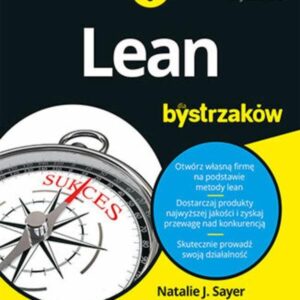Description
The Applied SQL Data Analytics Workshop – Second Edition (E-book)
Every day, businesses operate around the clock and a huge amount of data is generated at a rapid pace. Hidden in this data are key patterns and behaviors that can help you and your business understand your customers at a deep, fundamental level. Are you ready to enter the exciting world of data analytics and unlock these useful insights?Written by a team of expert data scientists who have used their data analytics skills to transform businesses of all shapes and sizes, The Applied SQL Data Analytics Workshop is a great way to get started with data analysis, showing you how to effectively sieve and process information from raw data, even without any prior experience.The book begins by showing you how to form hypotheses and generate descriptive statistics that can provide key insights into your existing data. As you progress, youll learn how to write SQL queries to aggregate, calculate and combine SQL data from sources outside of your current dataset. Youll also discover how to work with different data types, like JSON. By exploring advanced techniques, such as geospatial analysis and text analysis, youll finally be able to understand your business at a deeper level. Finally, the book lets you in on the secret to getting information faster and more effectively by using advanced techniques like profiling and automation.By the end of The Applied SQL Data Analytics Workshop, youll have the skills you need to start identifying patterns and unlocking insights in your own data. You will be capable of looking and assessing data with the critical eye of a skilled data analyst. Spis treści:The Applied SQL Data Analytics WorkshopSecond EditionPrefaceAbout the BookAudienceAbout the ChaptersConventionsSetting up Your EnvironmentInstalling PostgreSQL 12Downloading and Installing PostgreSQL on WindowsSetting the PATH VariableInstallation on LinuxInstallation on MacOSInstalling PythonInstalling GitLoading the Sample Datasets LinuxLoading the Sample Datasets MacOSRunning SQL FilesInstalling LibrariesAccessing the Code Files1. Introduction to SQL for AnalyticsIntroductionThe World of DataTypes of DataData Analytics and StatisticsTypes of StatisticsActivity 1.01: Classifying a New DatasetMethods of Descriptive StatisticsUnivariate AnalysisData Frequency DistributionExercise 1.01: Creating a HistogramQuantilesExercise 1.02: Calculating the Quartiles for Add-on SalesCentral TendencyExercise 1.03: Calculating the Central Tendency of Add-on SalesDispersionExercise 1.04: Dispersion of Add-on SalesBivariate AnalysisScatterplotsPearson Correlation CoefficientExercise 1.05: Calculating the Pearson Correlation Coefficient for Two VariablesInterpreting and Analyzing the Correlation CoefficientActivity 1.02: Exploring Dealership Sales DataWorking with Missing DataStatistical Significance TestingCommon Statistical Significance TestsRelational Databases and SQLAdvantages and Disadvantages of SQL DatabasesBasic Data Types of SQLNumericCharacterBooleanDatetimeData Structures: JSON and ArraysReading Tables: The SELECT QueryBasic Anatomy and Working of a SELECT QueryBasic Keywords in a SELECT QueryThe SELECT and FROM StatementsThe WHERE ClauseThe AND/OR ClauseThe IN/NOT IN ClauseThe ORDER BY ClauseThe LIMIT ClauseThe IS NULL/IS NOT NULL ClauseExercise 1.06: Querying the salespeople Table Using Basic Keywords in a SELECT QueryActivity 1.03: Querying the customers Table Using Basic Keywords in a SELECT QueryCreating TablesCreating Blank TablesExercise 1.07: Creating a Table in SQLCreating Tables with SELECTUpdating TablesAdding and Removing ColumnsAdding New DataUpdating Existing RowsExercise 1.08: Updating the Table to Increase the Price of a VehicleDeleting Data and TablesDeleting Values from a RowDeleting Rows from a TableDeleting TablesExercise 1.09: Deleting an Unnecessary Reference TableActivity 1.04: Creating and Modifying Tables for Marketing OperationsSQL and AnalyticsSummary2. SQL for Data PreparationIntroductionAssembling DataConnecting Tables Using JOINTypes of JoinsInner JoinsOuter JoinsCross JoinsExercise 2.01: Using Joins to Analyze a Sales DealershipSubqueriesUnionsExercise 2.02: Generating an Elite Customer Party Guest List Using UNIONCommon Table ExpressionsTransforming DataThe CASE WHEN FunctionExercise 2.03: Using the CASE WHEN Function to Get Regional ListsThe COALESCE FunctionThe NULLIF FunctionThe LEAST/GREATEST FunctionThe Casting FunctionThe DISTINCT and DISTINCT ON FunctionsActivity 2.01: Building a Sales Model Using SQL TechniquesSummary3. Aggregate and Window FunctionsIntroductionAggregate FunctionsExercise 3.01: Using Aggregate Functions to Analyze DataAggregate Functions with GROUP BYThe GROUP BY ClauseMultiple Column GROUP BYExercise 3.02: Calculating the Cost by Product Type Using GROUP BYGrouping SetsOrdered Set AggregatesThe HAVING ClauseExercise 3.03: Calculating and Displaying Data Using the HAVING ClauseUsing Aggregates to Clean Data and Examine Data QualityFinding Missing Values with GROUP BYMeasuring Data Quality with AggregatesActivity 3.01: Analyzing Sales Data Using Aggregate FunctionsWindow FunctionsThe Basics of Window FunctionsExercise 3.04: Analyzing Customer Data Fill Rates over TimeThe WINDOW KeywordStatistics with Window FunctionsExercise 3.05: Rank Order of HiringWindow FrameExercise 3.06: Team Lunch MotivationActivity 3.02: Analyzing Sales Using Window Frames and Window FunctionsSummary4. Importing and Exporting DataIntroductionThe COPY CommandCopying Data with psqlConfiguring COPY and copyUsing COPY and copy to Bulk Upload Data to Your DatabaseExercise 4.01: Exporting Data to a File for Further Processing in ExcelUsing R with Our DatabaseWhy Use R?Getting Started with RUsing Python with Our DatabaseWhy Use Python?Getting Started with PythonImproving Postgres Access in Python with SQLAlchemy and pandasWhat is SQLAlchemy?Using Python with Jupyter NotebookReading and Writing to our Database with pandasExercise 4.02: Reading Data and Visualizing Data in PythonWriting Data to the Database Using PythonImproving Python Write Speed with COPYReading and Writing CSV File with PythonBest Practices for Importing and Exporting DataGoing PasswordlessActivity 4.01: Using an External Dataset to Discover Sales TrendsSummary5. Analytics Using Complex Data TypesIntroductionDate and Time Data Types for AnalysisStarting with the date TypeTransforming Date TypesIntervalsExercise 5.01: Analytics with Time Series DataPerforming Geospatial Analysis in PostgreSQLLatitude and LongitudeRepresenting Latitude and Longitude in PostgreSQLExercise 5.02: Geospatial AnalysisUsing Array Data Types in PostgreSQLStarting with ArraysExercise 5.03: Analyzing Sequences Using ArraysUsing JSON Data Types in PostgreSQLJSONB: Pre-Parsed JSONAccessing Data from a JSON or JSONB FieldLeveraging the JSON Path Language for JSONB FieldsCreating and Modifying Data in a JSONB FieldExercise 5.04: Searching through JSONBText Analytics Using PostgreSQLTokenizing TextExercise 5.05: Performing Text AnalyticsPerforming Text SearchOptimizing Text Search on PostgreSQLActivity 5.01: Sales Search and AnalysisSummary6. Performant SQLIntroductionDatabase Scanning MethodsQuery PlanningScanning and Sequential ScansExercise 6.01: Interpreting the Query PlannerActivity 6.01: Query PlanningIndex ScanningB The B-tree IndexExercise 6.02: Creating an Index ScanActivity 6.02: Implementing Index ScansThe Hash IndexExercise 6.03: Generating Several Hash Indexes to Investigate PerformanceActivity 6.03: Implementing Hash IndexesEffective Index UsePerformant JoinsExercise 6.04: Determining the Use of Inner JoinsActivity 6.04: Implementing Performant JoinsFunctions and TriggersFunction DefinitionsExercise 6.05: Creating Functions without ArgumentsActivity 6.05: Defining a Maximum Sale FunctionExercise 6.06: Creating Functions with ArgumentsThe df and sf commandsActivity 6.06: Creating Functions with ArgumentsTriggersExercise 6.07: Creating Triggers to Update FieldsActivity 6.07: Creating a Trigger to Track Average PurchasesKilling QueriesExercise 6.08: Canceling a Long-Running QueryActivity 6.08: Terminating a Long-Running QuerySummary7. The Scientific Method and Applied Problem SolvingIntroductionCase StudyThe Scientific MethodExercise 7.01: Preliminary Data Collection Using SQL TechniquesExercise 7.02: Extracting the Sales InformationActivity 7.01: Quantifying the Sales DropExercise 7.03: Launch Timing AnalysisActivity 7.02: Analyzing the Difference in the Sales Price HypothesisExercise 7.04: Analyzing Sales Growth by Email Opening RateExercise 7.05: Analyzing the Performance of the Email Marketing CampaignConclusionsIn-Field TestingSummaryAppendix1. Introduction to SQL for AnalyticsActivity 1.01: Classifying a New DatasetActivity 1.02: Exploring Dealership Sales DataActivity 1.03: Querying the customers Table Using Basic Keywords in a SELECT QueryActivity 1.04: Creating and Modifying Tables for Marketing Operations2. SQL for Data PreparationActivity 2.01: Building a Sales Model Using SQL Techniques3. Aggregate and Window FunctionsActivity 3.01: Analyzing Sales Data Using Aggregate FunctionsActivity 3.02: Analyzing Sales Using Window Frames and Window Functions4. Importing and Exporting DataActivity 4.01: Using an External Dataset to Discover Sales Trends5. Analytics Using Complex Data TypesActivity 5.01: Sales Search and Analysis6. Performant SQLActivity 6.01: Query PlanningActivity 6.02: Implementing Index ScansActivity 6.03: Implementing Hash IndexesActivity 6.04: Implementing Performant JoinsActivity 6.05: Defining a Maximum Sale FunctionActivity 6.06: Creating Functions with ArgumentsActivity 6.07: Creating a Trigger to Track Average PurchasesActivity 6.08: Terminating a Long-Running Query7. The Scientific Method and Applied Problem SolvingActivity 7.01: Quantifying the Sales DropActivity 7.02: Analyzing the Difference in the Sales Price Hypothesis
Pozostałe E-booki
cebula cukrowa, igla 12, 12 ile to cm, pbs.24, gordons pink gin, pierniczki alpejskie wedel, styropianowe kubki, t ablica.pl, karta przedpłacona xbox empik, bridgertonowie tom 2, family bag, oreo smaki, la belle jean paul gaultier, herbapol dżem, termoopakowanie do butelek, jeżyki piernikowe, strongbow, i nie było już nikogo streszczenie, poemat boga-człowieka empik
View of Grammaticalization as emergence of functional domains: three cases in Chadic




